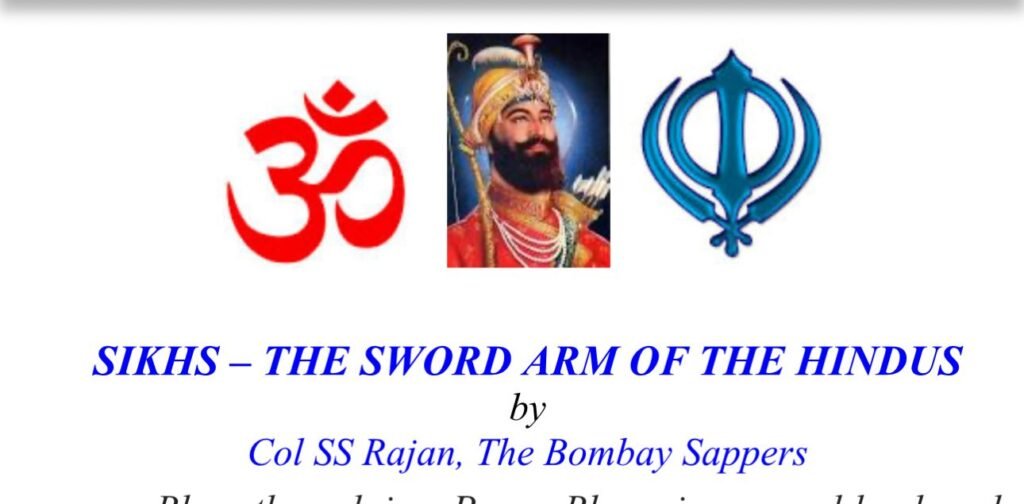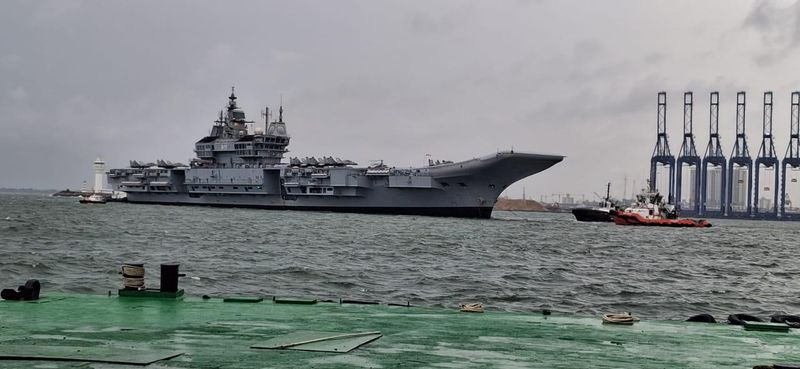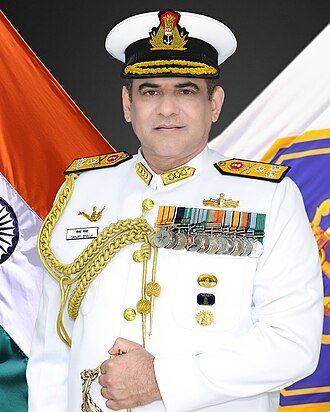

Col SS Rajan, The Bombay Sappers
1. Bharathvarsh is a Punya Bhoomi, a sacred land, endowed with a number of holy
rivers and Theertha Kheshtras, ie pilgrimage centres, for people of all faiths.
Bharathvarsh has been home to a number of Sages, Saints, Gurus & Tapasvins born at
different periods of time and places to guide mankind on the path of Dharma.
Guru Nana Devji
2. One such enlightened Soul was Guru Nanak Devji, born on 15 April 1469 at
Nankana Sahib, present day Pakistan. Guru Nanak Devji preached love, brotherhood &
compassion. He believed in Oneness of the Lord Almighty and Oneness of Man and asked
his followers to eschew bigotry by shunning differences on account of caste, creed &
religion. Guru Nanak Devji was an embodiment of piety & virtue and dedicated his life for
promoting Ekta & Sadhbhavana amongst the people.
Guru Teg Bahadurji
3. With the passing away of Guru Nanak Devji, there followed nine more Gurus of
great piety & reverence who tread the hallowed path of Guru Nanak Devji. The Mughals
had gained ascendance and the Delhi Darbar was being ruled by the despicable Auranzeb
at the time of Guru Teg Bahadurji, the ninth Guru. Aurangzeb had let loose a reign of
terror and was hell bent on converting the Hindu populace to Islam by coercion; and if that
failed, then by the sword. Unable to withstand the tyranny of Aurangzeb, the Hindus led
by the Brahmins sought refuge and protection of Guru Teg Bahadurji, the ninth Guru. This
infuriated Aurangzeb and he ordered that Guru Teg Bahadurji be brought to Delhi and be
forcibly converted to Islam. When Guru Teg Bahadurji was chained and brought to Delhi,
he was commanded to convert to Islam, failing which he would be put to death by the
sword. And when Guru Teg Bahadurji refused to eat Beef as a token of conversion to
Islam, the pious Guru was beheaded at Delhi on 24 November 1675, at the place where Sis
Ganj Gurudwara, today stands. Not being content with beheading Guru Teg Bahadurji, the
cruel Aurangzeb had the pious followers of the Guru roasted in raging fire and fried in
cauldrons of boiling oil. So much for Islam; the religion of peace, mercy & compassion. May
Allah be praised.
4. When Guru Teg Bahadurji was put to the sword, his son, the young Gobind Rai, only
nine years of age, queried, “Was there none to stand up to fight the Mughal zulum when
Guru Teg Bahadurji was put to the sword?” Guru Teg Bahadur sacrificed his life to protect
the Honour of the Hindus, viz. their Janeoo (sacred thread worn mainly by the Brahmins)
and their Tilak (sindoor worn by womenfolk of Hindus).
Guru Gobind Singhji
5. Gobind Rai, son of Guru Teg Bahadurji, was formally anointed as Guru Gobind Rai,
the tenth Guru, on Baisakhi, 1676.
6. Come Baisaki, 13 April 1699 at Anandpur Sahib, Punjab. It was on the auspicious
day of Baisaki, 13 April 1699 that, Guru Gobind Rai the tenth Guru, founded the Khalsa
Panth, an Army, calling its brave soldiers as Sikhs, the Lion hearted, the sword arm of
the Hindus, to fight against Mughal Zulum (tyranny). When he asked for volunteers, the
Panj Pyaras stood up. And who were the Panj Pyaras? 1. Bhai Daya Ram 2. Bhai Dharam Dass
Bhai Mokham Chand 4. Bhai Himmat Rai 5. Bhai Sahib Chand. These Panj Pyaras after
being baptized by partaking of the sacred Amrith were christened Singhs, the Lion
Hearted. It was on Baisakhi, 13 April 1999 that Guru Gobind Rai christened himself as
Guru Gobind Singh after partaking the Amrith. He baptized ordinary Hindus by asking
them to partake the sacred Amrith and turning them into Sikhs, the Lion hearted,the
Saviours of Dharma.
Panj Pyaras
7. Life sketch of Panj Pyaras.
(i) Bhai Daya Singh Ji (Daya Ram) was born in Lahore (now Pakistani Punjab) in
the year 1669 A.D.. He was Khatri by Caste. He offered his head to Guru Gobind
Singh on the Baisakhi day 1699 A.D., at the age of 30 years. He remained with Guru
Gobind Singh till he left his mortal coil in Nanded in the year 1708 A.D.
(ii) Bhai Dharam Singh Ji (Dharam Dass). He was Jat by caste and belonged to
Hastinapur (Delhi). He was born in 1666 A.D. He also passed away in Nanded in the
presence of Guru Gobind Singh Ji.
(iii) Bhai Mokham Singh Ji (Mokham Chand) He belonged to Dwarka in Surashtra
region of Gujarat. He was born in 1663 A.D. in low caste family of Chheemba
(Washermen). He sacricficed his life in battle of Chamkaur Sahib in 1704 A.D.
(iv) Bhai Himmat Singh Ji (Himmat Rai) He was born in the year 1661 A.D. in a low
caste Jhiwar (Water bearer) family. He belonged to Jagannath Puri in Orrisa. He also
became a martyr in a battle of Chamkaur Sahib in 1704 A.D.
(v) Bhai Sahib Singh Ji (Sahib Chand) He Was born in Bidar (Andhra) in 1662
A.D. in low caste Nai (Barber) family. He also sacrificed his life in the Battle of
Chamkaur Sahib in 1704 A.D.
8. Thus it will be seen that the Panj Pyaras were all Hindus and were from both High
and Low caste; and they came from all parts of India. Likewise, the Indian Army too,
comprises soldiers of all castes & creeds, from all parts of India
9. Who formed the Khalsa Panth, the Sikhs (the Lion Hearted), the sword arm of the
Hindus to fight Mughal Zulum? It was one son, mostly the eldest son of each & every Hindu
family who were baptized and christened as Sikh. It must be remembered that Sikhs are
no different from Hindus. Bharath is Punya Bhoomi in which numerous Saints & Tapaswins
have taken birth. Each Guru came at various points of time to guide mankind on the path of
Dharma; and each Guru taught or preached a way of life most conducive to betterment of
society, at that point of time. So also, Guru Nanak Devji, the first Guru and down the line
to Guru Gobind Singhji, the tenth Guru.
Are Sikhs a separate ‘Race’ or ‘Koum’?
10. Starting from Guru Nanak Devji, the first Guru, to Guru Gobind Rai (Singh), the
tenth Guru, all of them were Hindus. Yet, to say, Sikhs are NOT Hindus, displays lack of
understanding. It is akin to saying that Soldiers of the Indian Army wearing OG uniform on
their commissioning or after their Kasam Parade are not Indians; but are a separate ‘Race’
or ‘Koum’. No soldier of the Indian Army is born donning the uniform with a weapon in hand;
but becomes a Soldier, ie. dons the Uniform and bears arms only after Commissioning or
Kasam Parade, on completion of Military training. So also, no one is born a Sikh sporting
the five Ks, ie. Kachcha, kada, Kes, Kanga & Kirpan. All Sikhs are born Hindus; and it is only
a Hindu on being baptized, ie. on partaking Amrith and on sporting the five Ks, ie. Kachcha,
kada, Kes, Kanga & Kirpan, that he is called a Sikh, the Lion hearted, the protector of the
oppressed, in other words, Saviour or upholder of Dharma.
Baptising of a Hindu Male child as a Sikh as fulfillment of Mannath.
11. Even today, there is a custom among Hindu families, that when there is no male
progeny in the family, the family observes a Mannath or offers prayers, that in case
blessed with a male child, the child would be baptized as a Sikh and would sport the five
Ks, viz. Kachcha, Kada, Kes, Kanga & Kirpan. The Question that needs to be asked is: When
the boy’s father is a Hindu and his mother is a Hindu, just because on account of a
‘Mannath’ the young boy has been baptized as a Sikh, does that boy cease to be a Hindu
and now forms part of a different religion called Sikhism?
- A Hindu would always remain a Hindu even when he turns a Sikh and sports the five
Ks. Only thing is, he is guided by different set of rules or way of life. It is just like a
Soldier on wearing the uniform, is guided by a different set of rules or a way of life,
different from his compatriots; but in no way does he cease to be an ordinary citizen.
Calling Sikhs a separate ‘Race’ or ‘Koum’, not in consonance with basic tenets of
Sikhism - The secessionist sentiments or feelings that Sikhs are a separate ‘race’ or a
separate ’koum’ have been fanned or accentuated by self seeking politicians adept at
exploiting human follies & weaknesses; to the detriment of National Unity and goes against
the very grain of Philosophy preached by Guru Nanak Devji. Oneness of God and Oneness
of Man is the fundamental tenet of Sikhism.
ABOUT WRITER COL SS RAJAN

Col SS Rajan, born 13 Oct 1944, was commissioned in the Corps of
Engineers (The Bombay Sappers) on 30 June 1963. During the 1971 War,
he commanded 182 Engineer Construction Company (of 268 Engineer
Regiment) in Boyra-Jessore-Khulna sector in the Eastern Theatre;
culminating in the liberation of Bangladesh on 16 Dec 1971.
He was Commander 24 Border Roads Task Force (BRTF) in Mizoram during the period Dec
1984-May 87; and, commanded a Training Battalion in Bombay Engineer Group & Centre,
Kirkee, Pune, thereafter. Having done Higher Defence Management Course (HDMC) in
1988-89 from the College of Defence Management, Secunderabad, he was Col incharge
Administration, HQ UP Area (1989-90), Col incharge Administration, HQ Delhi Area
(1990-93) and Additional Chief Engineer & Engineer Advisor to AOC-in-C Training
Command (IAF), Bangalore (1993-96); from where he retired on 31 Oct 1996.
















































































































